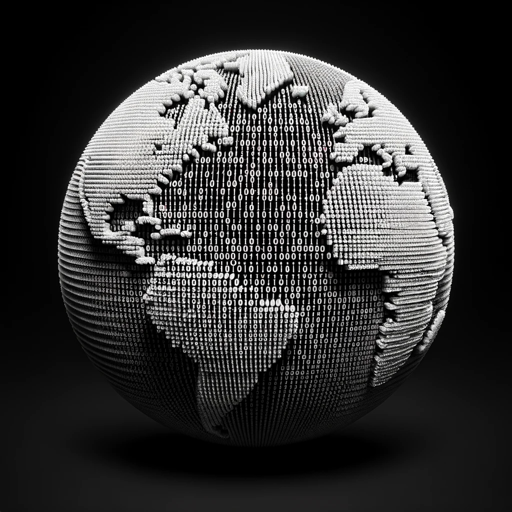HTMLCreator-HTML and CSS generator
AI-powered visual design to HTML conversion.
Convert this header from Figma to HTML.
How do I code this button from the layout?
Create CSS for this section's background.
Markup for this Figma navigation bar?
Related Tools
Load More
HTML Coder
Expert in SEO-optimized HTML5, CSS3, JS, and Vue.JS 3

World Class Software Engineer
[Start your code projects here.] Elevate your codebase, streamline coding, and seamlessly integrate with GitHub and deploy a live site. This includes creating and maintaining repositories. Features advanced Commands, Website Templates, and a guide to Soft

Web Design HTML Coder
HTML Code Generator translating design visions into HTML.

HTML Master
Guides newsletter creation, HTML Emails, and HTML web development patreon.com/isomorphicalgorithm

HTML Writer GPT
I'll write your HTML code for you

HTML GPT
Chat gpt html interpreter
20.0 / 5 (200 votes)
Introduction to HTMLCreator
HTMLCreator is a specialized tool designed to convert visual designs, such as those provided in Figma or PNG format, into well-structured HTML and CSS code. It meticulously analyzes design elements, suggests semantic HTML structures, and creates corresponding CSS to match the design's appearance. HTMLCreator emphasizes modern web standards, responsiveness, and cross-browser compatibility, ensuring the resulting code is both efficient and maintainable. For example, if given a PNG of a website layout, HTMLCreator will break down the visual components into HTML tags and style them using CSS to replicate the design accurately.

Main Functions of HTMLCreator
HTML Structure Creation
Example
HTMLCreator converts a visual design into a semantic HTML structure.
Scenario
A user provides a Figma design of a landing page. HTMLCreator suggests the appropriate HTML tags, such as <header>, <nav>, <section>, and <footer>, ensuring the layout is semantically correct and accessible.
CSS Styling
Example
HTMLCreator generates CSS to match the design's appearance.
Scenario
After analyzing the colors, fonts, and spacing in a PNG design, HTMLCreator writes the necessary CSS rules to style the HTML elements, ensuring the web page looks identical to the provided design.
Responsive Design
Example
HTMLCreator ensures the design is responsive across different devices.
Scenario
For a given website design, HTMLCreator includes media queries and flexible grid layouts in the CSS to make sure the web page adapts seamlessly to various screen sizes, from mobile phones to desktops.
Ideal Users of HTMLCreator
Web Developers
Web developers who need to convert visual designs into functional HTML and CSS can greatly benefit from HTMLCreator. It speeds up the development process by providing a solid starting point and ensures the resulting code adheres to best practices.
Designers with Coding Knowledge
Designers who have some coding knowledge but prefer to focus on design can use HTMLCreator to bridge the gap between design and development. By generating the initial HTML and CSS, designers can see their visual concepts come to life on the web more quickly and accurately.

How to Use HTMLCreator
1
Visit aichatonline.org for a free trial without login, also no need for ChatGPT Plus.
2
Upload or provide a detailed description of your visual design or Figma PNG layout.
3
HTMLCreator will analyze the design and suggest a semantic HTML structure, focusing on modern web standards and responsiveness.
4
Receive detailed HTML and CSS code snippets, which you can manually integrate into your web projects.
5
Review the provided code for accuracy and make any necessary adjustments to ensure cross-browser compatibility.
Try other advanced and practical GPTs
Occupational Health and Safety Consultant
AI-powered Occupational Health & Safety Consultant

IntelliJ Code
AI-powered tool for Kotlin coding excellence

Commentaire d'arrêt de Droit
AI-powered legal case analysis tool

文献总结机器人
AI-powered tool for oral medicine article summarization.

System Dynamics
AI-powered dynamic systems modeling.

Calculus Calculator
AI-powered solutions for your calculus problems.

EN-RU Translator
AI-powered English-Russian translations

Doodle font watercolor by Manootart
AI-powered watercolor font for charming designs.

Project+
AI-Powered Insights for Smarter Projects.

Excel en español
AI-Powered Assistance for Excel 365

Video Generator
Create AI-powered short videos effortlessly
Psychology public account writer
AI-powered tool for psychology-focused content.

- Web Design
- Responsive Layouts
- CSS Styling
- HTML Conversion
- Design Prototypes
HTMLCreator Q&A
What is HTMLCreator?
HTMLCreator is an AI-powered tool designed to convert visual designs, such as Figma PNG layouts, into semantic HTML and CSS code. It focuses on modern web standards, responsiveness, and cross-browser compatibility.
Do I need any special software to use HTMLCreator?
No special software is needed. You only need access to aichatonline.org, where you can upload your design and receive detailed HTML and CSS code snippets.
Can HTMLCreator handle complex web designs?
Yes, HTMLCreator is capable of analyzing and converting complex web designs into accurate HTML and CSS code, ensuring that the final output adheres to best practices and is responsive.
Is HTMLCreator suitable for beginners?
Absolutely. HTMLCreator provides clear and detailed instructions, making it easy for beginners to understand and implement the generated HTML and CSS code.
What are the common use cases for HTMLCreator?
Common use cases include converting design prototypes into web pages, creating responsive layouts from visual designs, and generating semantic HTML and CSS code for various web projects.